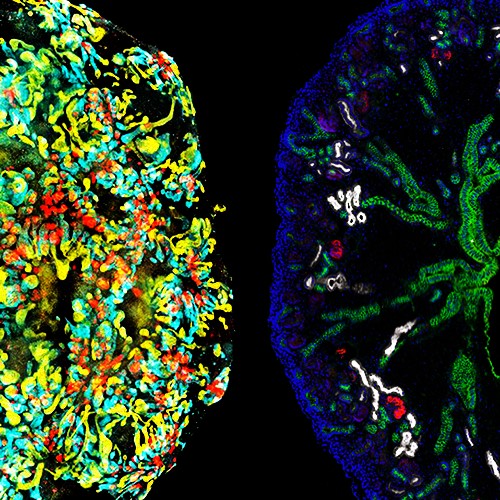Renal Disorders

Stellixir provides cell-based nephrotoxicity assays to test and identify renal toxic compounds. The kidney plays an important role in eliminating drug metabolites. Several drugs, particularly aminoglycosides, have manifested drug-induced nephrotoxicity. With a group of well experienced experts in the field of drug discovery, Stellixir is able to assist you with study design, experiment conduct, and data analysis to evaluate the nephrotoxicity of your compounds at an early stage of drug discovery. Screening drug candidates for nephrotoxicity is of great importance for ruling out renal toxic drugs and preventing such tragic incidents in the pre-clinical and clinical stage.
In order to better avoid late-stage drug failure due to nephrotoxicity, we offer the following assays using Human Renal Proximal Tubule Epithelial Cells (HRPTEpiC) or Human Renal Epithelial Cells (HREpC) to test drug candidates for renal toxicity.
Cytotoxicity Assay: HRPTEpiC cells are used in the assay to assess compound induced nephrotoxicity in vitro. As a very sensitive marker for general toxicity, cell viability is assessed with high content analysis after incubation with test compounds of different doses. IC50 will be calculated. Markers for apoptosis (caspase 3) and mitotic block (phosphorylated Histone H3) are stained and assessed to reveal mechanisms of nephrotoxicity related to apoptosis and cell cycle regulation.
Mitochondrial Stress Assessment: Mitochondrial membrane potential and Cytochrome C release are two important indicators of Mitochondrial stress and cell death that can be observed and monitored at a relatively early stage. Using high content imaging, those markers can be detected simultaneously with morphological parameters and other biomarkers including caspase 3 and c-Jun.
Biomarker (KIM-1 and NGAL) Detection:Kidney injury molecule-1 (KIM-1), a novel biomarker of renal proximal tubule injury, is sensitive and renal-specific in early detection. The prediction of nephrotoxicity is performed via quantifying KIM-1 expression levels. Neutrophil gelatinase-associated lipocalin (NGAL), is a biomarker correlated with renal toxicity. Upon nephrotoxic insult, NGAL will be over-expressed in cultured kidney cells and released into supernatant.
Stellixir, is able to carry out multiplexed nephrotoxicity assays based on human renal epithelial cells. Our experts are capable of designing customized assays to meet the requirements of our clients. Please feel free to contact us to learn more about the assays and our capabilities in drug toxicity screening.
Discovery Services:
- Cytotoxicity Assays
- There is a measurement of Cell health markers such as glutathione content (GSH), phospholipidosis (PLD), mitochondrial mass (mito mass) and mitochondrial membrane potential (MMP) alongside cellular ATP levels.
- Mitochondrial Stress Assessment
- Biomarker (KIM-1 and NGAL) Detection
- High Content Screening- Using standard cell model and disease-related cell lines.
- High Content Imaging- Analysis of drug interaction at a sub-cellular level
Available Models:
- Renal Proximal Tubule Epithelial Cells (RPTEC)
- 3D models of Human iPSCs
- Human Primary cell-based 2D and 3D disease-relevant models
Techniques Used: Flow Cytometry, Confocal/Fluorescence Microscopy (Multi-colour Immunofluorescence), ELISA (Fluorimetry/Colorimetry), RTqPCR, WB.
